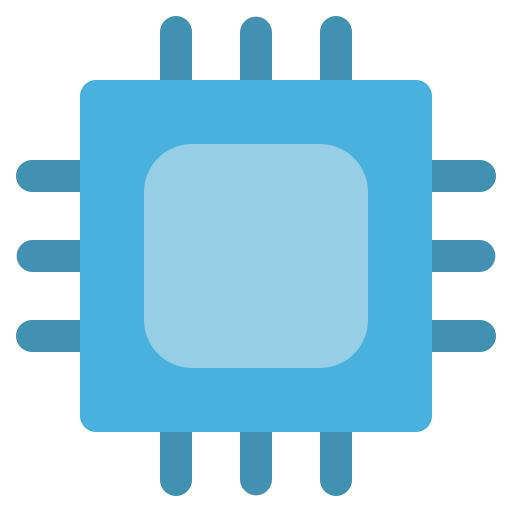

Just FYI, those are almost all on the same instance, and you can block that instance as a whole. It’s dedicated to anime, so there’s not a ton of collateral damage.


Just FYI, those are almost all on the same instance, and you can block that instance as a whole. It’s dedicated to anime, so there’s not a ton of collateral damage.


The very first line:
A loss leader (also leader) is a pricing strategy where a product is sold at a price below its market cost to stimulate other sales of more profitable goods or services.
So the answer to their question is “Yes, a loss leader needs to lead to something”. I have no idea why you think they have no idea what they’re talking about.


It really depends on what you mean by “the real world”.
The most common use for Linux is on servers. For this scenario, not only does the terminal make sense, but it’s often required as there is no GUI installed.
For Linux on the desktop, the terminal is very much analogous to Windows PowerShell. More casual users can ignore it for most purposes, but may sometimes need it for troubleshooting.
If you are trying to say that you “know” Linux, say for career development, you absolutely need to know the terminal. Nearly all professional roles will require it.


“Instead” was meant to be within the previous clause. It was originally a single sentence, but it was way too long so I broke it into two. I can see how it’s misleading.
Phrased another way, the claim is that regular porn reduces desire, and its users are happy to be alone.


This is similar to the arguments against “regular” porn - that it reduces the desire to pursue a real-life partner. Instead, allegedly, people are happy to skip that entirely in favor of enjoying porn, alone.
I have no idea what the truth is (probably somewhere in the middle), but they are in direct conflict with each other.


I’m not sure that “AuthenticAMD” is any better. There’s probably an entire table of words like this that we should be wary of.
That said, this took me down a small rabbit hole of CPUIDs. I want one with “AMDisbetter!” Or “CyrixInstead”


Windows hasn’t been the cash cow for a long time. Office is still pretty big (and the corporate licensing is often bundled), but the big moneymaker is Azure.
If these companies are switching to web-based services in Azure, it ends up being a net positive for Microsoft.


Are they counting all of the bots on services like tinder, bumble, and Ashley Madison?


Considering it’s EA, this might actually be a good thing for the world.


Clearly the requirements will not drop. But due to the passage of time, they aren’t quite as ridiculous anymore. The last machines that didn’t meet the requirements were made in 2017. It’s not unreasonable to require a device that’s less than 8 years old. Most individuals upgrade more often than that anyway.
Yes, it would be preferable to keep the older ones in service. But it’s a smaller pool than you think, and most of them will actually stay in use but unpatched.
Are you able to physically replace the HDD (preferably with an SSD)? If so, you can use the (Win10) Media Creation Tool to create a USB installer.
When it prompts for a key, just skip it. If you have an OEM mass activation laptop (i.e. anything from a major brand), it’ll activate automatically after. If, for whatever reason it still doesn’t activate, you’ll have a nag screen telling you to activate. It won’t significantly limit what you do.
It’s nearly certain. OEM activation has been stored on the motherboard since XP. XP-7 required a matching OEM cert (easily found online), while 8+ have a unique license in the BIOS. For these, you just reinstall the OS, skip the key during setup, and let it connect afterwards for all of the updates and whatnot.
Now, licenses to other apps, such as Word, are not so simple.
Kind of. They will be multiples of 4. Let’s say you got a gigantic 8i8e card, albeit unlikely. That would (probably) have 2 internal and 2 external SAS connectors. Your standard breakout cables will split each one into 4 SATA cables (up to 16 SATA ports if you used all 4 SAS ports and breakout cables), each running at full (SAS) speed.
But what if you were running an enterprise file server with a hundred drives, as many of these once were? You can’t cram dozens of these cards into a server, there aren’t enough PCIe slots/lanes. Well, there are SAS expansion cards, which basically act as a splitter. They will share those 4 lanes, potentially creating a bottleneck. But this is where SAS and SATA speeds differ- these are SAS lanes, which are (probably) double what SATA can do. So with expanders, you could attach 8 SATA drives to every 4 SAS lanes and still run at full speed. And if you need capacity more than speed, expanders allow you to split those 4 lanes to 24 drives. These are typically built into the drive backplane/DAS.
As for the fan, just about anything will do. The chip/heatsink gets hot, but is limited to the ~75 watts provided by the PCIe bus. I just have an old 80 or 90mm fan pointing at it.
The one I had would frequently drop the drives, wreaking havoc on my (software) RAID5. I later found out that it was splitting 2 ports into 4 in a way that completely broke spec.
I don’t want to speak to your specific use case, as it’s outside of my wheelhouse. My main point was that SATA cards are a problem.
As for LSi SAS cards, there’s a lot of details that probably don’t (but could) matter to you. PCIe generation, connectors, lanes, etc. There are threads on various other homelab forums, truenas, unraid, etc. Some models (like the 9212-4i4e, meaning it has 4 internal and 4 external lanes) have native SATA ports that are convenient, but most will have a SAS connector or two. You’d need a matching (forward) breakout cable to connect to SATA. Note that there are several common connectors, with internal and external versions of each.
You can use the external connectors (e.g. SFF-8088) as long as you have a matching (e.g. SFF-8088 SAS-SATA) breakout cable, and are willing to route the cable accordingly. Internal connectors are simpler, but might be in lower supply.
If you just need a simple controller card to handle a few drives without major speed concerns, and it will not be the boot drive, here are the things you need to watch for:
Also, make sure you can point a fan at it. They’re designed for rackmount server chassis, so desktop-style cases don’t usually have the airflow needed.
To anyone reading, do NOT get a PCIe SATA card. Everything on the market is absolute crap that will make your life miserable.
Instead, get a used PCIe SAS card, preferably based on LSi. These should run about $50, and you may (depending on the model) need a $20 cable to connect it to SATA devices.
I did this back in the days of Smoothwall, ~20 years ago. I used an old, dedicated PC, with 2 PCI NICs.
It was complicated, and took a long time to setup properly. It was loud and used a lot of power, and didn’t give me much beyond the standard $50 routers of the day (and is easily eclipsed by the standard $80 routers of today). But it ran reliably for a number of years without any interaction.
I also didn’t learn anything useful that I could ever apply to something else, so ended up just being a waste of time. 2/10, spend your time on something more useful.
Yes, but that’s only an issue if you are interested in those other communities. In this case, the instance is dedicated to anime, so it’s only an issue if you want to browse those other anime communities.